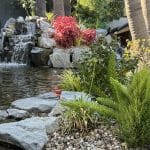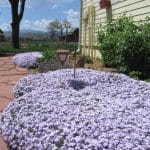Grassy Lawns and Beyond – What’s Trending in Ground Cover
Birds & Bees Flowers
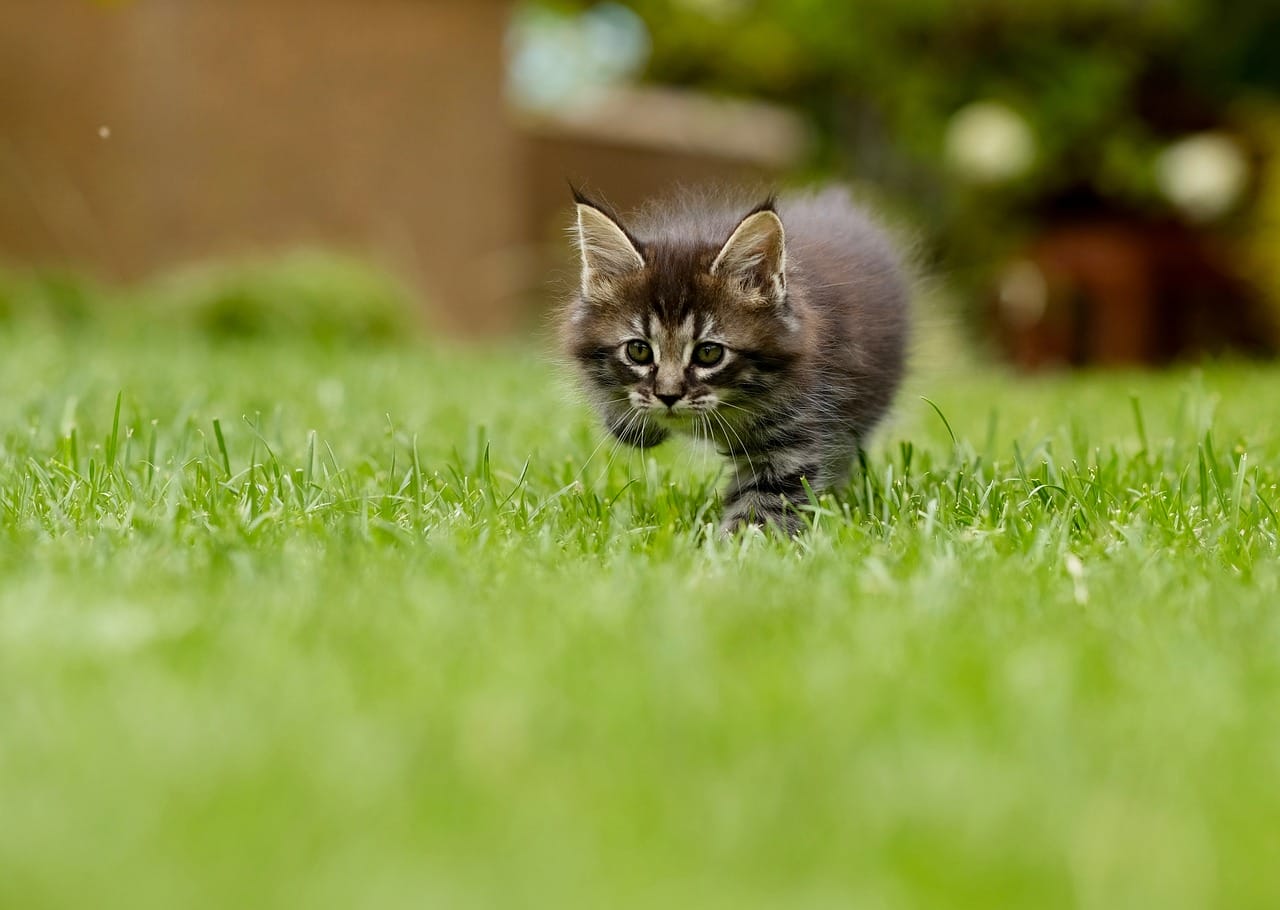
The soft feeling of a perfect lawn under your bare feet is so refreshing, and if you have a dog like mine, watching her find that ideal spot to lie down and roll onto her back for a good self-scratching is so satisfying. Still, there are lawn alternatives to replace some of that grass, could be the summer trick you’ve been hoping for. Here are two things I learned.
- Ground covers can be magic.
- Magic takes patience, water, and the occasional “Why isn’t this growing?!” moment.
If you’ve been toying with the idea of replacing some (or all) of your grass with something greener, lower-maintenance, or just plain prettier, you’re not alone. Lawns are getting a makeover in backyards all over the country. Let’s dig into five trends I’ve been seeing (and trying) that can transform a yard from thirsty and high-maintenance into an eco-friendly, eye-catching patchwork of life.
1. The Drought-Tolerant All-Stars
In the last few years, drought-tolerant plants have gone from “that’s nice” to “must-have.” People are tired of battling summer water restrictions or watching their lawns turn into crispy brown pancakes by August.
One of my personal favorites?
Creeping thyme. It stays green, flowers like it’s on a mission, and smells like you’ve just walked through a spice market after rain. It’s tough enough to take a bit of foot traffic, and it laughs at dry spells. Sedums are another good pick — they’re like that unbothered neighbor who never seems stressed about the weather.
The bonus: Less water means a lower bill and less guilt when the sprinklers kick on. And yes, if you’ve got an automatic system, you can dial back the schedule and still keep these guys happy.
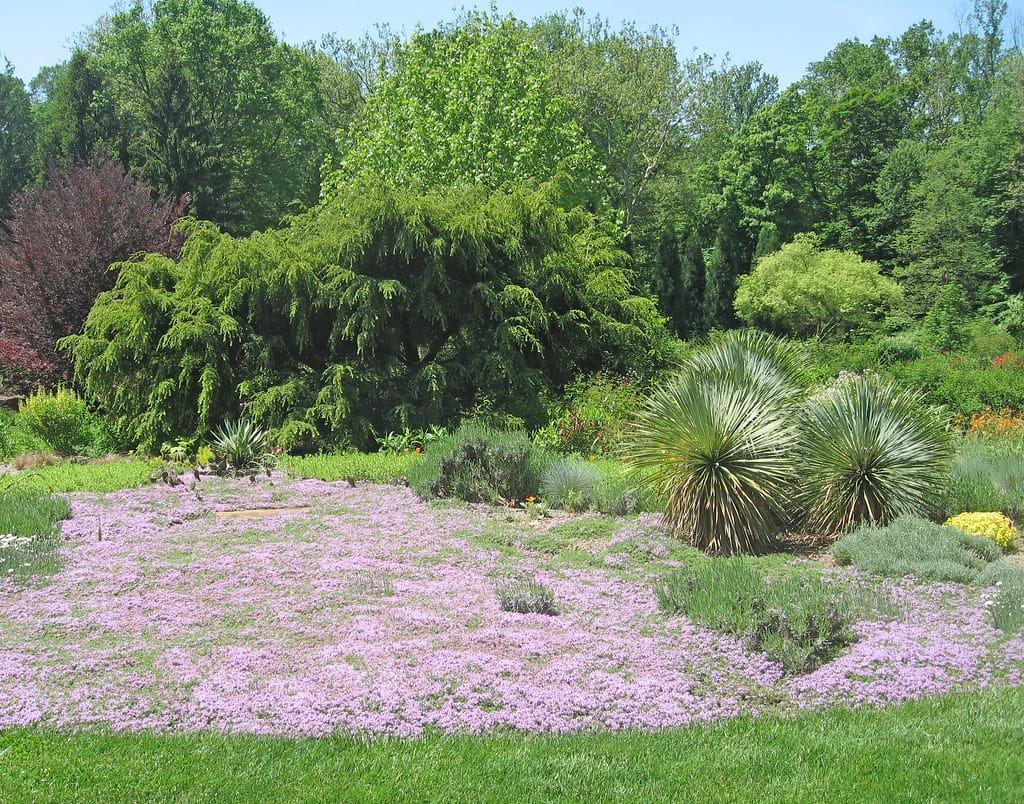
2. Clover Lawns – The Comeback Kid
Clover was the darling of American lawns before the 1950s, but it got unfairly labeled as a “weed.” Fast-forward, and here it is making a glorious comeback.
I planted microclover in one of my side yards three years ago. It’s stayed green through heatwaves, resists dog pee spots, and fixes nitrogen right into the soil like it’s running its own underground compost operation. I’ve barely fertilized that patch since.
The texture is soft under bare feet, and bees love it. The trick is planting thick so weeds don’t have a chance to move in. Once it’s established, it’s almost self-sufficient — like that cousin who shows up to a potluck with a full meal for ten (wow, I just described myself perfectly).
3. Native Grass Blends
If you’re not ready to give up the grassy look entirely, consider switching to a native grass mix. These blends are tailored to your region and often grow more slowly, meaning fewer mowing days. Plus, they’re adapted to local rainfall patterns, so they’re not as thirsty and you can possibly cut your water bill down.
I switched my front strip to a mix of buffalo grass and blue grama. It took a season to settle in, but now it waves in the breeze like it’s in a prairie postcard. Birds pick seeds in the fall, and I don’t have to fight it into submission every Saturday.
4. Edible Ground Covers
Why not make your lawn pull double duty? Strawberries, oregano, and creeping rosemary can form lush mats while giving you something tasty to harvest.
A friend of mine has an entire slope of alpine strawberries. By mid-June, she’s handing out handfuls like candy. I’ve tucked oregano between my raised beds — it smells incredible when I brush past it with the watering can.
If you’ve got an automatic sprinkler system, this is where it pays off. Set it to deliver a deep soak in the early morning, and you’ll get vigorous growth without mildew issues.
5. Pollinator-Friendly Plant Carpets
Low-growing flowers like ajuga, sweet alyssum, or self-heal not only look like a painter’s palette spilled across your yard, but they feed bees, butterflies, and even hummingbirds.
One summer, I planted self-heal in a patch I’d almost given up on. By August, it was buzzing so loudly I could hear it from the porch. I didn’t mind — that sound was pure life.
These plants don’t demand a strict schedule, but they reward you richly if you let them spread. Plus, they give the garden a wild, natural feel that’s much more interesting than a uniform green carpet.
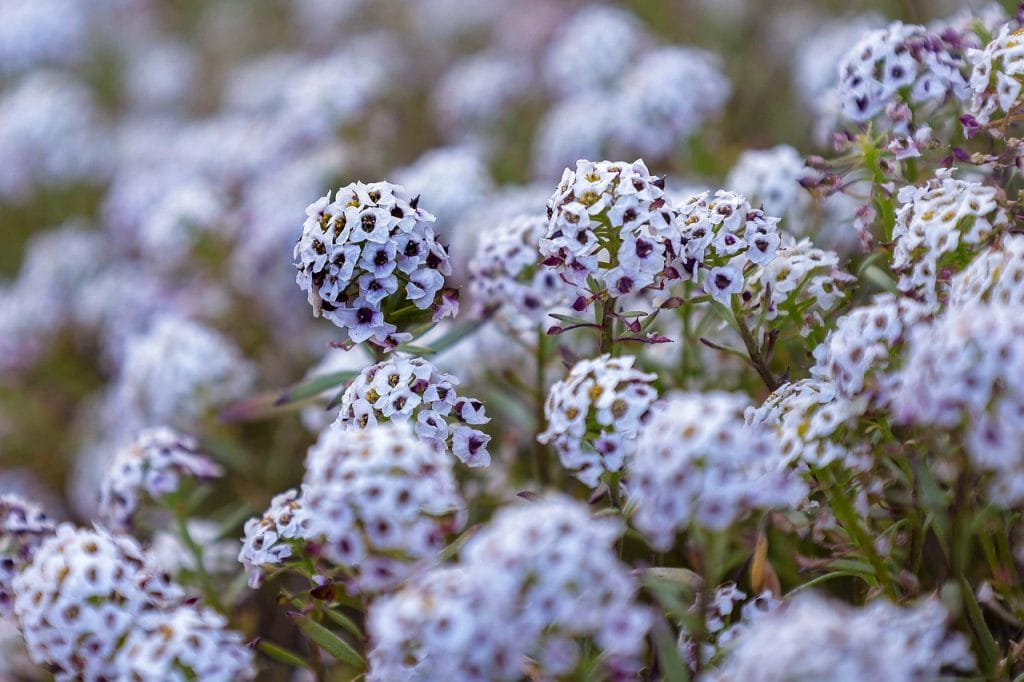
Quick Tips for Switching from Grass to Ground Cover
- Start small: Convert one section at a time so you can learn what works before tackling the whole yard.
- Prep well: Remove weeds, loosen the soil, and add compost before planting. Healthy soil is your foundation.
- Water smart: Even drought-tolerant plants need consistent moisture in the beginning. Use drip irrigation or a fine sprinkler to establish roots.
- Mind the traffic: Not all ground covers like to be walked on. Plan stepping stones where needed.
- Be patient: The first year, it’s all about rooting in. The real payoff comes in year two and beyond.
A Personal Note on Why I’m a Believer in Alternatives to Grass
I’ve spent years experimenting in my yard, from hydroponic basil to starting oak trees from acorns, just to see if I could. Every change taught me something — sometimes the hard way. Swapping parts of my lawn for ground covers has been one of the most satisfying shifts I’ve made. It’s cut down on water, brought in more wildlife, and turned my yard into a patchwork quilt instead of a green rectangle.
I’m not saying I’ll never keep a bit of grass. There’s still something about that picnic-on-the-lawn feeling. But once you start replacing grass with plants that give more to the birds and bees than they take from your water bill and soil, it’s hard to stop.
FAQ: Ground Cover Basics
Q: What’s the easiest ground cover to start with?
A: Microclover and creeping thyme are beginner-friendly. They establish quickly and need little upkeep once settled.
Q: Can I plant ground cover over my existing grass?
A: In most cases, it’s better to remove the grass first. Grass will compete for water and nutrients and often wins.
Q: Will ground covers attract pests?
A: Healthy, diverse plantings usually attract beneficial insects more than pests. Some, like oregano and rosemary, can even deter unwanted bugs.
Q: How much water do drought-tolerant ground covers need?
A: During establishment, water regularly. Once mature, many can get by on rainfall alone, depending on your climate.
If you’re itching to try one of these trends, consider a thoughtful walk your yard, and imagine it a little wilder, a little more colorful, and a whole lot friendlier to the planet. Encouraging bees is especially nice if you are also growing fruits and vegitables for pollenization. Then, pick one spot and start. Before you know it, you’ll be trading grass clippings for strawberries and thyme, and wondering why you didn’t do it sooner.
And hey, if it doesn’t work out the first time? Well, I’ve composted more failed ideas than I care to admit — and every one of them made the next planting better.
Share this post
Table of Contents
All categories
More From The Garden
Disclosure: This post may contain affiliate links. That means if you click and buy, The Bright Garden may earn a small commission, at no extra cost to you. We only recommend products we’ve vetted and believe will benefit our readers.




